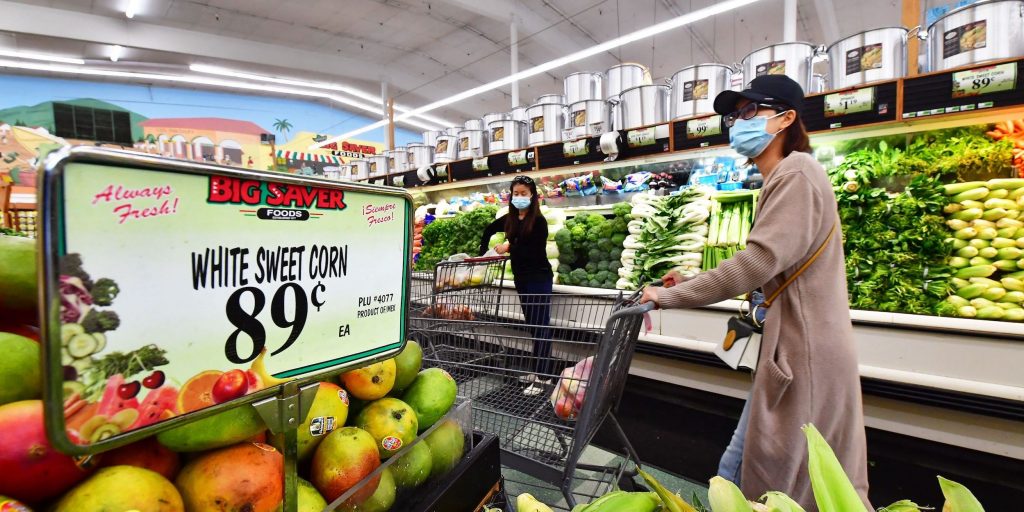- There's an unusual split in the US economy that's making the inflation problem even worse.
- Consumer sentiment is the worst it's been in a decade, yet retail sales are at a record high.
- Massive demand is one reason inflation is so high. If it doesn't cool, prices will likely surge higher.
There's something very confusing going on in the US economy.
Americans are, by the widest margin in a decade, feeling awful. Inflation continues to weigh on economic moods, with shoppers facing soaring prices from the gas station to the grocery store. The trend dragged the University of Michigan's sentiment index to its lowest level since 2011, signaling the bleakest outlook since the sluggish recovery from the Great Recession.
But Americans sure aren't acting on that pessimism. Data out Tuesday showed spending at retailers and restaurants climbing 0.9% in April to yet another record high of $677.7 billion. The nationwide spending spree has slowed throughout 2022, and the April print marks the smallest one-month gain since spending declined in December. Yet the report still shows spending growing and remaining well above the pre-pandemic trend.
Americans might be feeling the worst economic mood since 2011, but their spending habits suggest inflation will have to get even worse before they start pulling back.
The divergence between spending and sentiments highlights just how hard it will be to bring inflation back to sustainable levels. Even with prices soaring at the fastest pace since the early 1980s, Americans' demand has shown no signs of wavering.
In normal times, such strong demand would fuel similarly impressive economic growth, as about 70% of gross domestic product is fueled by consumer spending. But the economy remains extraordinarily strained on the supply side. Lockdowns across Asia hampered production last year and roiled the global supply chain. Improvement since has been scarce, and a new surge of coronavirus cases in China risks worsening the situation. Without ample supply, Americans' overwhelming demand will continue to boost prices.
The Federal Reserve started raising interest rates in March in a bid to cool demand and, in turn, better match it with supply. Still, it typically takes several months for tighter monetary policy to affect spending. The resilience of Americans' demand will make it difficult, then, for the central bank to fight inflation, especially as it isn't relying on the supply situation to ease anytime soon.
"It's going to be a challenging task, and it's been made more challenging in the last couple of months because of global events," Fed Chair Jerome Powell said Tuesday during a conference hosted by The Wall Street Journal, referencing Russia's invasion of Ukraine and rolling lockdowns in China.
The split between spending and sentiment has a bright side, too. Had spending cratered alongside sentiment, economic growth would plummet in kind and put the US at a heightened risk of recession. The persistence of healthy demand signals stimulus worked to keep Americans afloat throughout the pandemic, and continued spending is likely to keep the recovery moving forward even as the Fed reverses its easy-money policies.
"Consumers' tolerance to high inflation will continue to be tested and the renewed spike in gasoline prices, along with tighter financial conditions, will weigh on households' willingness to spend on big-ticket items," Lydia Boussour, lead US economist at Oxford Economics, said in a Tuesday note. "But strong fundamentals, including robust labor income growth and a pile of accumulated savings, will continue to underpin consumer spending."
